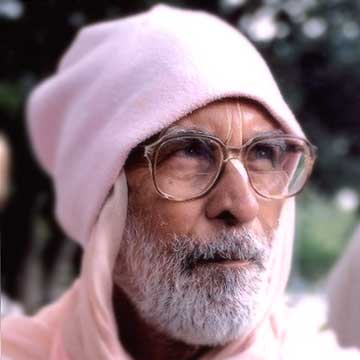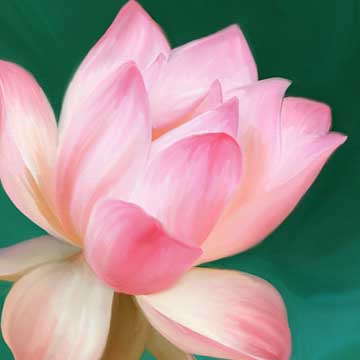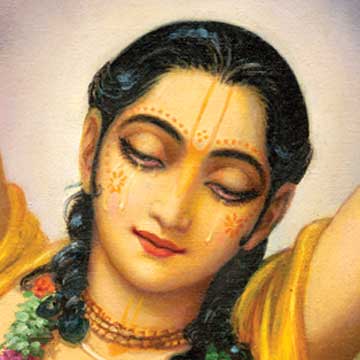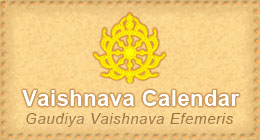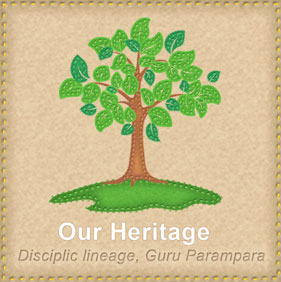Mathurā: The Sārasvata Mission in the Heart of Vraja - Part Three
- Details
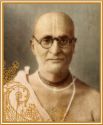
Our revered Paramagurudeva, nitya-līlā-praviṣṭa oṁ viṣṇupāda aṣṭottara-śata-śrī Śrīmad Bhakti Prajñāna Keśava Gosvāmī Mahārāja, an intimate associate of Śrīla Bhaktisiddhānta Sarasvatī Ṭhākura Prabhupāda, achieved several significant accomplishments in Śrī Vraja-maṇḍala. His aim was to address Śrīla Prabhupāda’s concerns for Mathurā-maṇḍala [refer to Part 2] and thus fulfil his innermost desires.
The Blind Well
- Details
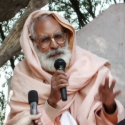
In the beginning of creation, there were two demons. They were very powerful. Their names were Hiranyakasipu and Hiranyaksa. You know the meaning of this 'Hiranyakasipu' and 'Hiranyaksa'. That 'hiranya' means gold. Those who have an idea that by gold, by wealth they will be happy, they are called Hiranyakasipu or Hiranyaksa, both. I have come to know that in this land of Brazil, that there were so many hills of gold, and from Lanka, Ravana came here..
Our Relationship with Krsna
- Details
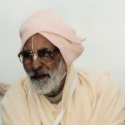
What is the relationship between Radhika and Yamuna? Yamuna means Visakha. And what is the relationship between Radhika and Visakha? They are sakhis. Then what will be our relation with Yamuna? Will she be Mother or Sakhi? All our relations depend on Radhika’s relationships. Because if one has decided that I am [fixed in my relationship as an aspiring] maidservant of Srimati Radhika then such a person will not say - ‘Yamuna Maiya Ki Jaya’ Every relationship should depend especially on Srimati Radhika’s relationships.
Sri Rathayatra in Sri Dhama Navadvipa
- Details
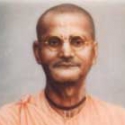
Having read the essay entitled 'Sri Rathayatraya Sri Rupanuganucintana' [Ratha-yatra according to the conception of the followers of Srila Rupa Gosvami] published in the first issue, volume 13 of 'Sri Gaudiya Darsan' [the journal of Sri Caitanya Sarasvat Matha], it seems that this article has been printed without showing it to the most honourable editor, Pujyapada Srila Bhakti Raksaka Sridhara Maharaja...
Bhakti Does Not Make One Proud
- Details
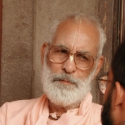
"By performing devotion, one will not develop conceit; rather, humility will come.
If someone who is not eligible hears discourses about the Lord and studies Vedas and other scriptures, then his studies and his performance of devotional practices is just for the sake of ego. And in case of devotees, these same activities will make them very meek, humble, simple; their dealings will be sweet.
God Created Humans In His Own Image
- Details
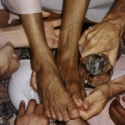
That there was a Buddhist person, guru. He was in the age of eighty. There was a mountain, and in that mountain there was a very deep cave. And he went inside. And he told his disciples to put a very heavy stone on the mouth of that cave. And there was nothing, no food, no air, no water, nothing there...
Criticize and Lose the Holy Name
- Details
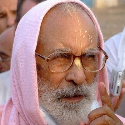
This is our dilemma. We are doing hari-nama, staying in the holy place and hearing Bhagavatam, but we are not really hearing. Sometimes, some of us only act as if we are following. We speak publicly on the Bhagavatam and give instructions to others, but we do not protect ourselves from offense to Vaisnavas. Joking and laughing, we somehow disrespect or criticize Vaisnavas. The holy name (who is God Himself) cannot tolerate this. Therefore, we deceive ourselves and we are deprived of the real fruit of chanting the holy name. In this way, many lifetimes are wasted...
Real Sraddha And Anisthita-Bhakti
- Details

To have strong faith in words of Hari, guru, and vaisnava, this is also outer symptom. Especially in the words of guru and qualified vaisnava and sastra varga. But this is also outer symptom. What is the inner? What is the constitutional form of this sraddha? It is given by guru or vaisnava and that is, a desire to serve Krishna. Again you should hear. A desire to serve Krishna...
Sraddha And Bhava-Bhakti
- Details
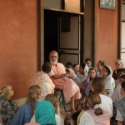
If one is practicing bhakti by their senses, but their aim is not to achieve bhava-bhakti, then their practicing can never be called sadhana...
Is Guru Really Omniscient?
- Details
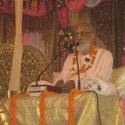
Especially, I have instructed the brahmacaris and sannyasis to be very careful. There is no more to tell than what I have told in Badger. Even those who are householders should try to come out from that burning well. Don't again try to enter household life. But hardly anyone is listening to me, so what can I do? This is maya.
Na Danam Na Janam
- Details
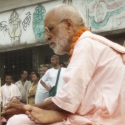
Caitanya Mahaprabhu is weeping and uttering this, and the other jewel-like verses of Sri Siksastakam. Everything - all moods and all objects of our life - are in these eight slokas. All the Vedas are present there, Srimad-Bhagavatam is there, and Caitanya-caritamrta and the essence of all the books of our Gosvamis are there. But how can you realize this?
Vaishnava Calendar Update
- Details

Daylight Saving Time also know as Summer Time, when in effect, has been added to the Purebhakti calendar for locations that use it.
Always Think of Me
- Details
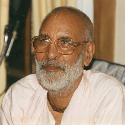
'Man mana bhava’ means, ‘Give your mind to Me; absorb your mind in Me.’ Our commentators have given an example. In Vraja, a young cowherd girl was newly married and had come to Nandagaon. She has heard a great deal about Krsna and His wonderful pastimes, but she had not yet seen Him. She wanted to see Him up close...
Nectar of Govinda Lila - Always Think of Me
- Details
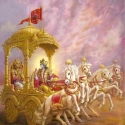
Sri Krsna will select a heart which is dear to Him and then say, “You come! I will take your heart.” Even if we really desire to give Him our heart, it is very difficult, but if He desires to take our heart, then it is possible. But we must make our heart to be such that when Krsna sees us it will inspire greed within Him...
Be Kind to Cows
- Details
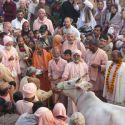
The cow species has an unbreakable relation with the āryan culture, refined civilization, lineage and dharma of India. Cows are the life of our culture, the essence of honor in our society, and an indivisible limb of our dharma. Without cows, our culture and very selves will become corpses devoid of life...
Sri Siksastakam
- Details

Once there was a wife who mistreated her husband and then rejected him. Because the husband was fully absorbed in that lady, he became so shocked and bewildered that he was about to die. We should always remember these things. When you are chanting and remembering in the association of high-class Vaisnavas, these bad attachments will leave and renunciation is bound to come. If it is not coming, something must be wrong...
Page 1 of 48

